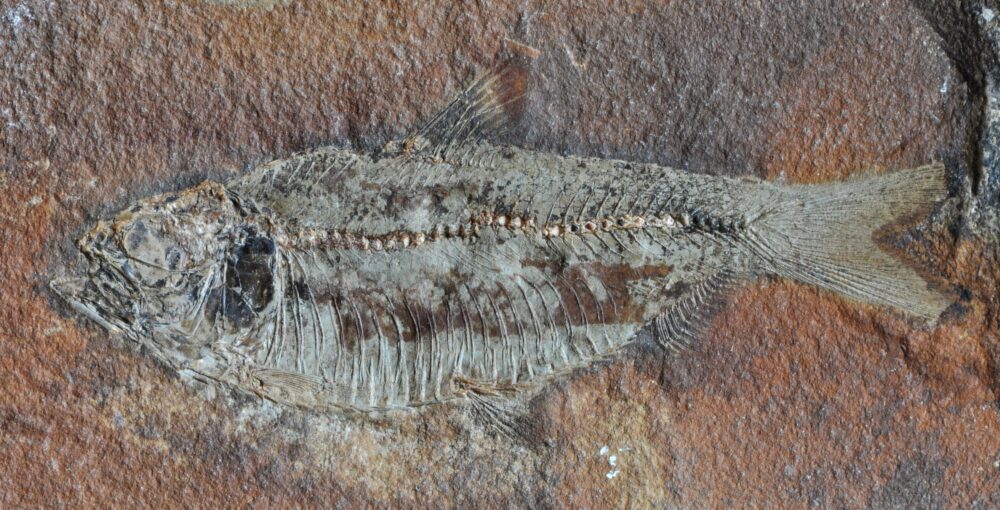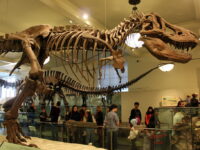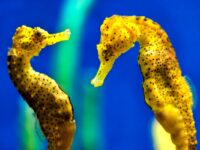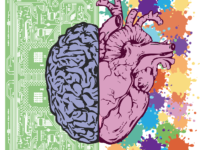In September of 2022, a research team working at the Gogo Formation sedimentary deposit in western Australia discovered the world’s oldest heart, located inside a fossilized prehistoric fish. The fish, classified as a placoderm, had been dead for approximately 380 million years.
The placoderm is crucial to studying the evolution of modern-day vertebrates. Because they are among the earliest jawed vertebrates, their study provides information about the skeletal structure and tissue anatomy changes that arose due to jaw development. Previous studies of placoderms, for example, have given insight as to how the first teeth, jaws, skull bones, and limbs of the jawed vertebrate evolved.
The fossilized heart — as well as a stomach, intestine, and liver that were also discovered — are incredibly valuable for studying the evolution of jawed vertebrates because they are soft tissue fossils, or fossils of tissue such as skin, muscles, and organs. They provide much more detailed insight into the organisms’ anatomy and offer more information about the organism’s ecology and evolution than their hard tissue fossil counterparts, which include bones, shells, and teeth. Intact soft tissue fossils are incredibly difficult to find since most are present only in minuscule quantities and flattened into two-dimensional remains that destroy their original anatomy. These soft tissue remains were preserved in their original three dimensions and are considered some of the world’s best fossils for this age, and they were so well preserved that some intestines even showed the remains of the placoderms’ last meal: a crustacean.
These soft tissue remains were preserved in their original three dimensions and are considered some of the world’s best fossils for this age, and they were so well preserved that some intestines even showed the remains of the placoderms’ last meal: a crustacean.
Researchers used scans of the samples to create three-dimensional images of the tissues based on the varying densities of the surrounding rock and minerals deposited by bacteria. They created the first three-dimensional model of a complex placoderm heart with two distinct chambers, as well as a model of the stomach with a liver and intact intestines.
Virtual reconstruction of the fossilized tissue revealed the previously unknown location of the placoderm heart, which was underneath their gills and in the back of their throat. This is much different than the more primitive jawless fish whose hearts are closer to their liver, with the chambers sitting sideways instead of on top of one another.
This information regarding the placoderm heart supports the hypothesis that the repositioning of the heart in jawed vertebrates is linked to the evolution of the jaw and neck in modern-day bony fishes. Fossil scans show that to accommodate jaws in bony fishes, their head, necks, and organ arrangement changed dramatically to resemble the anatomy of modern sharks. According to lead researcher Kate Trinajstic, this finding shows a much larger evolutionary leap between jawed and jawless vertebrates, which contrasts with the common idea that evolution progresses in much smaller steps.
Fossil scans show that to accommodate jaws in bony fishes, their head, necks, and organ arrangement changed dramatically to resemble the anatomy of modern sharks.
These findings also answer one of the most difficult evolutionary questions regarding bony fishes: whether lungs were present in the more primitive jawed vertebrates. Fish have gills, but lungs provide buoyancy to allow sinking and rising. Current primitive bony fishes have lungs, but the more modern ones use a swim bladder for buoyancy. There have been debates as to whether ancient primitive types of bony fishes also had lungs. Previously, studies of a more primitive type of placoderm, Bothriolepis, seemingly supported the hypothesis that lungs existed in primitive placoderms, but further analysis of the Gogo Formation placoderm structures revealed that these structures that were thought to be lungs were actually the liver. Much like modern sharks, the placoderms are now thought to have relied on their livers for buoyancy instead of their lungs. The forward movement of the heart would have made room for the development of lungs in a later lineage, however, and the team’s findings reveal that another type of bony fish, the Osteichthyes, was the true origin of lungs.
This virtual reconstruction and the evolutionary information it provided is only one example of how valuable three-dimensional soft tissue preservations and modern-day imaging and visualization technologies can be.
This virtual reconstruction and the evolutionary information it provided is only one example of how valuable three-dimensional soft tissue preservations and modern-day imaging and visualization technologies can be. They allow specimens to be studied in an immense amount of detail and can restore incomplete specimens, leading to remarkably accurate visualization of the anatomy and general appearance of ancient organisms that have been dead for hundreds of years and providing answers to even the most perplexing evolutionary questions.
- BioEssays (2018). DOI: 10.1002/bies.201700167
- Virtual Paleontology (2016). DOI: 10.1017/scs.2017.10
- World’s oldest heart preserved in 380 million-year-old armored fish
- Oldest vertebrate fossil heart ever found tells a 380 million-year-old story of evolution
- 380-million-year-old heart illuminates evolutionary history






